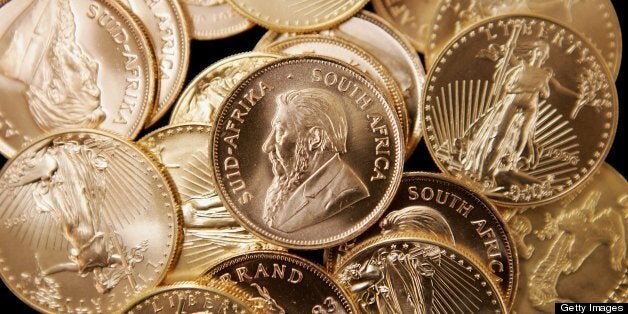
The support mechanisms put in place by many of the world's central banks have meant that the markets have remained relatively clam this year to date, in relative terms. The FTSE100 is churning towards a fresh all-time high, house prices are up and a meaningful economic recovery seems only a few months away in the US. So it would seem strange that, even with this backdrop, we have seen a currency descend into trouble as quickly as the South African rand has this week.
In fact, we have seen a fair few emerging market currencies take a real beating in the past week or so, but it is the rand that has really started to crumble. South Africa is blessed with huge natural deposits of precious and industrial metals and exports of these goods make up around 4% of the country's GDP.
In recent months, there has been a series of strikes in mining operations across the country that has dragged down the country's output massively. Industrial production fell by a whopping 7% in Q1 of this year and the on-going dispute between the unions and multinational mining operations over pay looks to drag on in perpetuity.
Similar disputes last year came to a head when 44 miners were shot by police outside a mine owned by Lonmin PLC in the Marikana area of the country. The country has become a tinderbox since, and a gradual weakening of its currency has ensued.
The problem is amplified by the fact that what is still being dug out of the ground is being sold for a fair chunk less than it was towards the end of 2012. At the time of writing, gold is down 9.9%, silver down 20.02% while platinum, a metal that South Africa is the world leader in, is down 15% from the highs that it hit in February of this year.
Other emerging market currencies around the world have similar issues. The currencies of places like Indonesia, Malaysia, Hungary and Turkey have all come in for a rough ride in recent times, but the inherent fundamental picture of the economy has always seen buyers come back into the market to buy once a certain level is hit. The lack of this theoretical buffer is what worries me so much about South Africa; there is very little standing in the way of further losses.
Not even the South African central bank will be able to stop things from collapsing for too long. Central banks such as the Bank of England build up large reserves of foreign currency to use as a buffer in the case of their own sovereign money coming under pressure. The South African Reserve Bank's reserves could easily run out if a further run on the rand continues.
Much like the time when George Soros took on the UK and won by destroying the pound over the course of just a couple of days, the near-term future of a country is being born out on the currency markets on a second-by-second basis. South Africa is in a perfect storm and the rand is struggling to stay afloat.
